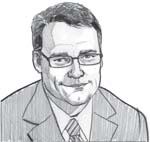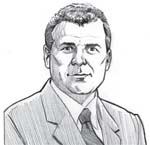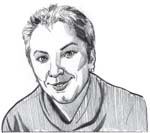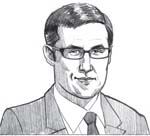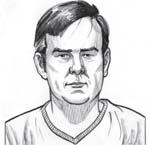Brian Stacy
Everyone knows “LED” because the term is out there in the general parlance, but that doesn’t mean that everybody knows what an LED is or how it works. Horton: It’s just like any other source that you dealt with in the past, they [owners] just don’t understand it. The owners, particularly, have this impression of LED being such a panacea. When I have to deliver that, gee, your T8 or your T5 fluorescent is still a more efficient system or delivers more for the dollar at the moment, they get very disillusioned that maybe LED is not the right thing—and then they have a bad impression about it.
We have projects right now where people are putting LEDs behind closed walls … and we are trying to explain to them that you still have to get to it, that it still has a life and it has heat issues and all the other things that go with it. It’s unfair that it ends up, again, back on the designer to have to really educate the clients and the architects about it.
Stacy: I see that as part of our job, educating our clients about the technologies. Its about being able to understand what the client’s goals really are with it. It does give us, as practitioners, the ability to be seen as the ones who understand the technology, but also as ones who can help a client add value to a project.
Steen: The other point is that there’s really a lot of bad LED product … out there.
Stacy: The lighting industry has an LED hangover and we need to get rid of it.
Steen: We can all jump in and see just some absolutely abysmal LED light bulbs that are out there. There are a lot of good products that are coming out now, but part of the fear is that within other channels, people are taking some of these really bad products and just stuffing it in demonstrations.
What can be done to deal with bad products? How can we get across that they’re putting a lot in jeopardy for the industry? Lind: We constantly tell people to do mockups. The other part of the problem isn’t just some downlights from 15 or 20 companies, we also have to consider that you’ve got billions of Edison-based sockets where people are going to be replacing lamps. People started with CFLs and they’re a mixed bag in terms of performance. But now, people are trying to jump into LEDs. I’ve been excited to see more and more design firms doing their own testing in their offices or they are getting clients to understand the benefit of a mock-up.
Stacy: This middle process becomes as equally important. We’re starting to include language within our spec—and I’ve been test-running it on a few projects—if you changed out an LED product for something different, to provide the base and the substitution to show that it’s [the replacement] equal or better.
Should there be a new specification document developed to address this type of source and the various components that go with it? Stacy: I think it’s much like the IALD Spec Integrity document that was issued years ago and in the somewhat recent update. It’s about being able to have good language inside of the specification, just so it’s clear and everybody is on the same page, so that not only the designers or the architects or the owners, but also the contractors and manufacturers, don’t get burned.
Steen: I think the specification is a huge deal because you really need to get in there and be talking about what kind of CRIs you want, getting back to the lumen packages as opposed to just what kind of power you want out of the device. All of those things become critically important to what’s actually being specified.
Lind: No doubt, specifications are probably the most critical piece. But it starts with the specification data that’s being given by the manufacturers, many of whom … don’t realize some of the details that were critical in terms of applying these products into a building.
